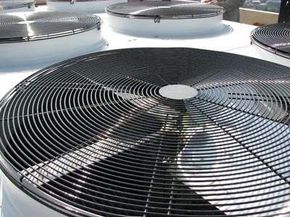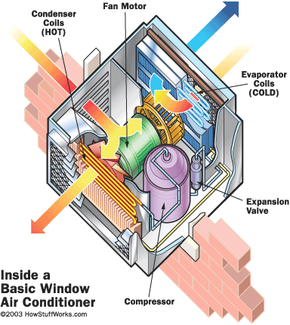A novel method of air conditioning is taking root among some of the world's most powerful corporations, and it uses the simple power of ice. Morgan Stanley and Credit Suisse now use massive ice blocks instead of traditional air-conditioning systems in some of their offices. Credit Suisse is considering expanding the system beyond its 1.9-million-square-foot Manhattan office to its other locations around the world, but they won't be alone. An estimated 3,000 facilities around the world use ice-based cooling systems.
The system is not only more environmentally friendly but also saves big companies like Goldman Sachs, which put an ice cooling system in its new flagship office, millions of dollars in utility bills. The system works by making ice at night, when lower power usage means energy is cheaper and lower temperatures mean less power is required to freeze water. The larger the difference between nighttime and daytime temperatures is, the greater the energy savings. In Credit Suisse's system, the ice forms overnight, and as it melts during the day, fans blow cold air into the cooling system and throughout the building. At the end of the day, the 51,200 gallons of water -- spread across three rooms in 64 tanks -- is ready to be frozen again. The ice-block system can also be combined with traditional air conditioning, which is the case in Credit Suisse's New York office.
Advertisement
The ice system essentially acts like an ultra-efficient battery, storing energy that's gathered cheaply at night and releasing it during the day. Ice makes a convenient and efficient medium for the job. By volume, it has up to triple the energy-holding capacity of water. The system also has less potential for breakdown compared to more traditional systems.
The ice cooling system is intriguing and energy efficient, but it's not entirely original. In the 19th century, a hospital in Florida used ice to cool hospital rooms and many a home chemist has used ice to cool himself on a hot day. Still, you're unlikely to find an ice-based cooling system in someone's home. The cooling equipment requires a lot of space and a significant upfront investment -- Credit Suisse paid $3 million for theirs -- though the investment presumably pays for itself over time.
The state of New York, along with other state and municipal governments, is encouraging companies to make environmentally-friendly infrastructure investments, in some cases offering tax breaks or grants. The pollution and waste caused by skyscrapers constitutes a major problem for large systems. Ice-cooling systems do more than save on electricity bills; by using power at night, they ease strain on already overtaxed electrical grids -- a process known as "load shifting" -- using energy during non-peak hours.
On the next page, we'll look at some other alternatives to air conditioning.
Advertisement


